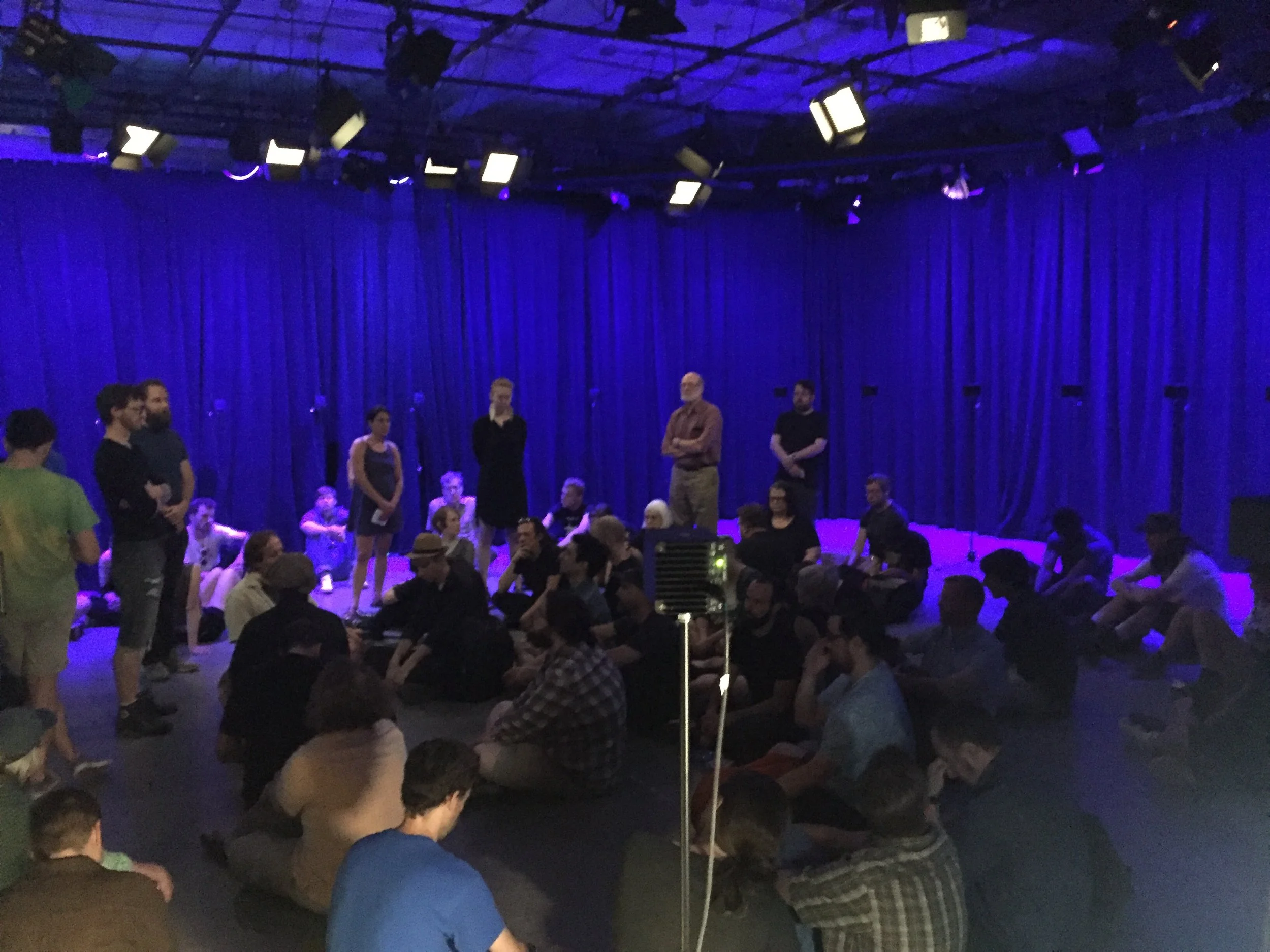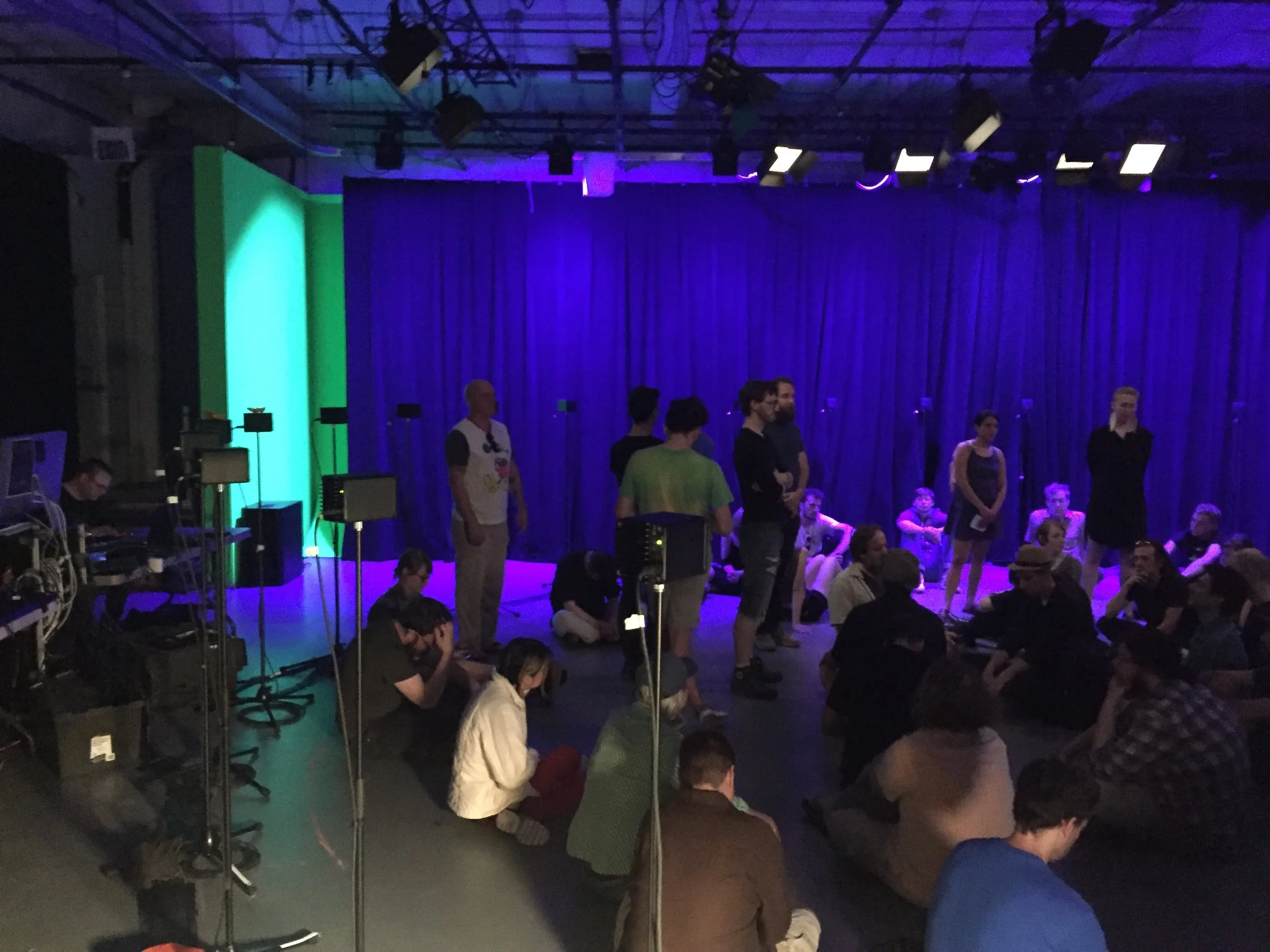unityGain
I designed and built a High Density Loudspeaker Array (HDLA) at Portland Community College called unityGain. unityGain is a 32 channel Meyer speaker system driven by a rackmount PC, a 32 channel Orion interface and spatialization software that I wrote in Pure Data, with a Lemur front end.
In creating this system I had three primary goals.
1) To build a high quality, excellent sounding system capable of ambisonic, vbap, and other spatialization techniques and experiments.
2) To create a platform making these exciting new surround sound formats accessible to artists outside of traditional research institutions or career paths. (I know of no other HDLAs at the community college level)
3) To get students involved in every aspect of system design, implementation, and event production, with the assumption that any part of this production process could be a potential career path for some of these students.
To make multi channel spatialization on unityGain accessible to as wide a range of artists as possible, I wrote software in Pure Data that implements Ville Pulkki’s Vector Based Amplitude Panning (VBAP) algorithms to spatialize eight discrete hardware inputs to a circular speaker configuration of the system’s 32 channels. I made a straightforward patch that has a 0-360 degree panner for each input, along with a distance/spread control, an auto-panner, preset management, and some simple options for random behavior.
I then built a simple and intuitive UI for Lemur running on an iPad.
I designed the patch in constant conversation and with help from some of my more advanced students.
At the same time, our department put a call for works out on the Regional Arts and Culture Council blog, and I put together an interdisciplinary and diverse panel to review applications and choose eight artists to present work on unityGain at a two day event that I produced through in partnership with Open Signal, a centrally located community media center. The panel understood that experience with multichannel audio was not a prerequisite for this opportunity, and in fact we were hoping to get applicants who had never had opportunities on large multichannel systems.
Our panel ended up choosing a really interesting group of artists with a wide diversity of background, experience, and aesthetic interest. After individual email consultations, I met with each sound artist for a three hours to work out spatialization approaches on the system. We had 3 artists with some significant multichannel experience, a and five who had never worked on multichannel systems before. All of them interfaced my software except for one artist who had written her own panners in maxMSP. They were all able to plug hardware, instruments, or and/or outputs from their soundcards into unityGain, and either control the panning options live, or perform some basic preset control over the panners.
unityGain was then installed temporarily at Open Signal by myself along with my student labtechs and the help of a professional live sound engineer in town with enough multichannel audio installation experience to provide some mentoring moments for my student techs. The event ended up being hugely successful, at capacity with community members and students, and truly was one of the most interesting sonic happenings I’ve seen in Portland. I believe the event was extremely artistically compelling and refreshing because of the variety of new aesthetic approaches presented on a system designed with inclusion in mind.
That first unityGain event provided visibility and understanding of the system to my students, none of whom had any prior exposure to multi-channel audio formats. The following summer when it was time for them to do their capstone project, my students built unityGain temporarily into a 10’ x 12’ geodesic dome and did 3 dimensional spatialization utilizing their own panning solutions in their own patches.
unityGain is flexible enough system for student programmers to experiment with, but also has my patches running on it for accessible panning options for any of our music students to experiment on without necessitating programming/patching experience. These patches are also on github in a further effort to facilitate greater access to these technologies.

